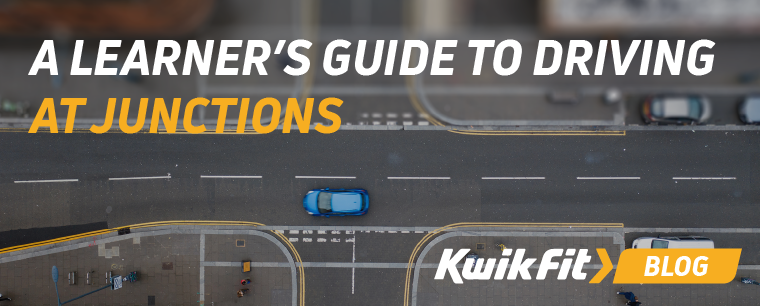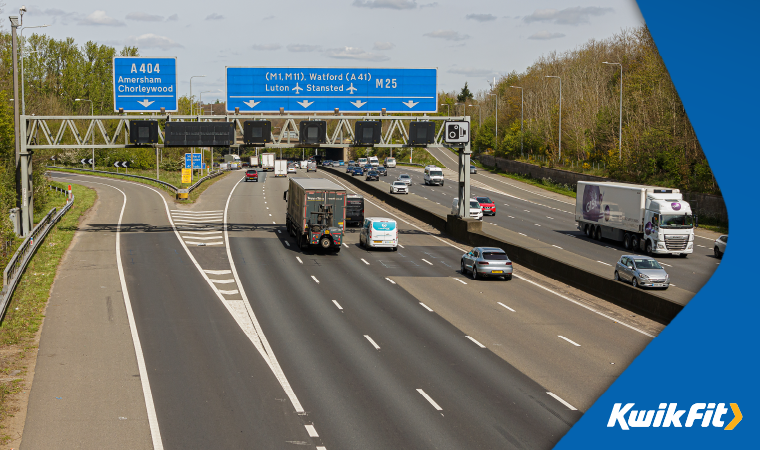A Learner's Guide to Driving at Junctions
Jack Dreyer | Monday 12th August 2024 11:30am

It may not come as much of a surprise to you, but mastering junctions is often the trickiest part of learning to drive, and the most difficult part of a driving test. However, itís a critical skill that all learners need to have in order to be proficient and safe drivers.
In this blog, weíll talk you through what junctions are, how to approach them, the different types of junctions on our UK roads, and tips for overcoming common challenges. Weíve provided tips and steps for navigating each junction to give you a better understanding of how they work and what you need to do to undertake them successfully.
What are junctions & why do they matter?
As a learner driver, youíll start approaching and navigating junctions once you start to get the hang of moving off, pulling over, and using your gears.
But, what is a junction? Itís the point where two or more roads meet from different directions. This can include T-junctions, crossroads, and roundabouts.
Navigating a road junction can be a challenging part of learning to drive. There are a lot of moving parts to consider - not just keeping yourself and your vehicle safe but other road users, too.
The most common mistakes that learners make at junctions include:
- Not being aware of their speed and approaching too quickly or slowly
- Not looking properly before leaving a junction, potentially because theyíre nervous or rushing
- Not positioning their vehicle correctly when turning right or left
- Not checking mirrors or blind spots when approaching or emerging from junctions
How to approach a junction
The key to approaching a junction is observation. Itís critical to recognise a junction early so that you can start planning your manoeuvre and position your vehicle correctly. You may notice certain signs that indicate a junction is near, such as an increase in pedestrians, traffic slowing down, or road signs indicating a junction is ahead.
Once youíre aware a junction is coming up, you can start to gradually reduce your speed by applying the brakes gently or using the engine to slow down, also known as engine braking. You should also check your mirrors and signal the direction you intend to take, get in the correct lane (if necessary), and position your vehicle. For example, if you intend to turn left, your vehicle should be approximately 50 cm from the kerb and pointed slightly to the left.

Navigating different types of junctions
T-junctions
A T-Junction is where a minor road meets a major road at a perpendicular angle. Drivers on the minor road must give way to traffic on the major road before joining or crossing it.
Once youíve approached a T-junction, follow these steps to navigate it successfully:
- Look both ways - Look both left and right to check for oncoming traffic. If your view is obstructed due to parked cars or buildings, move forward slowly and be ready to stop if necessary.
- Proceed with caution - consider the speed and distance of oncoming traffic before you decide to pull out. If the road is clear or thereís enough space to join without slowing down traffic, proceed with caution. If not, wait until itís safe to join.
- Execute the turn - If turning left, check your mirrors and signal left. Slowly turn into the major road, keeping to the left-hand side. If turning right, signal right, and when itís safe, turn across the road into the correct lane.
- Adjust to the new road - once youíve joined the new road, cancel your signal and check your mirrors. Adjust your speed to match the flow of traffic.
Crossroads
At a crossroads, you may need to go straight, turn left, or turn right, which can be challenging to navigate as a learner driver. Understanding the right of way rules is integral to succeeding with this junction.
Letís take a look at some tips to help you complete this manoeuvre:
- Assess the situation. Are there traffic lights or stop signs?
- Look ahead for any vehicles, pedestrians, or cyclists that may be crossing. Always check all directions to ensure itís safe to proceed.
- If there are no traffic lights or signs, the general rule is to give way to traffic coming from the right.
- If there are traffic lights or signs, follow the instructions. If thereís a stop sign, come to a complete stop, even if the road appears clear.
- Always check your mirrors and signal before completing a manoeuvre.
- Some crossroads have a yellow box junction - do not enter the box unless your exit is clear, except when youíre turning right and are prevented from doing so by oncoming traffic or other vehicles waiting to turn right.
- Watch out for pedestrian crossing - youíll need to give way to pedestrians.
- Stay calm and focused - this will help you make better decisions.
- Not all drivers follow the rules perfectly so be aware and prepared to adjust your actions accordingly.
Roundabouts
The approach to roundabouts works in very much the same way as the other junctions. You need to look out for signs, choose the correct lane, slow down your speed, check your mirrors, and signal. When you reach the roundabout, give priority to traffic already on the roundabout coming from the right, and look for gaps in the traffic to enter safely.
When exiting the roundabout, itís important to signal your intention to leave and check your mirrors for cyclists or vehicles that might be in your blind spot. You should also gradually move to the lane closest to your exit. Once youíve exited the roundabout, cancel your signal, check your mirrors, and adjust your speed to the flow of traffic.
Roundabouts can be busy and challenging, but staying calm and confident can help you make better decisions. Try not to hesitate - as this can be confusing to other drivers.
Common challenges & how to overcome them
It may seem obvious, but hesitation and uncertainty are two of the most common challenges that learner drivers face when navigating junctions.
Whilst itís important not to be overly confident (this can be dangerous and lead to accidents), learner drivers should also avoid hesitating too much. Not only does it cause confusion for other road users, it can increase the risk of rear-end collisions. Practice makes perfect, and the more you practise, the more confident you will become.
If itís your first time approaching a junction, or you're navigating a junction in a new area, this uncertainty can cause some anxiety. However, itís crucial to stay calm and focused to reduce the risk of mistakes and potential hazards. If you feel yourself getting nervous or anxious in uncertain situations, practise deep breathing and speak to your Driving Instructor. Their job is to teach you the manoeuvres and provide support and advice if youíre stuck.
Your go-to experts once youíve passed your test
Learning to drive isnít easy but we can promise you itís worth it. And, once youíve passed your driving test and purchased your first car, weíll be here to help if you have any concerns or need some advice.
Feel free to reach out to your nearest Kwik Fit centre or give us a call. Donít forget to keep up-to-date with all the latest motoring news and trends on our blog.
Any facts, figures and prices shown in our blog articles are correct at time of publication.
Featured Articles
Is it Illegal to Drive With One Headlight?
Saturday 19th July 2025
Wondering if itís illegal to drive with one headlight? Learn about the safety risks and penalties of illegal blown bulbs and why you should fix them promptly.
Air Con in EVs & Hybrids: Experts Answer Your Questions
Monday 30th June 2025
Does air con drain EV batteries? Can you use the air con while charging an electric car? Find out the answers to these questions & more from Kwik Fitís experts.
Why Is Your Car Making a Noise? Fixes & Tips
Friday 13th June 2025
When your car starts making unexpected noises, it can certainly be quite disconcerting; it may be nothing to worry about, but hereís what you need to know.









